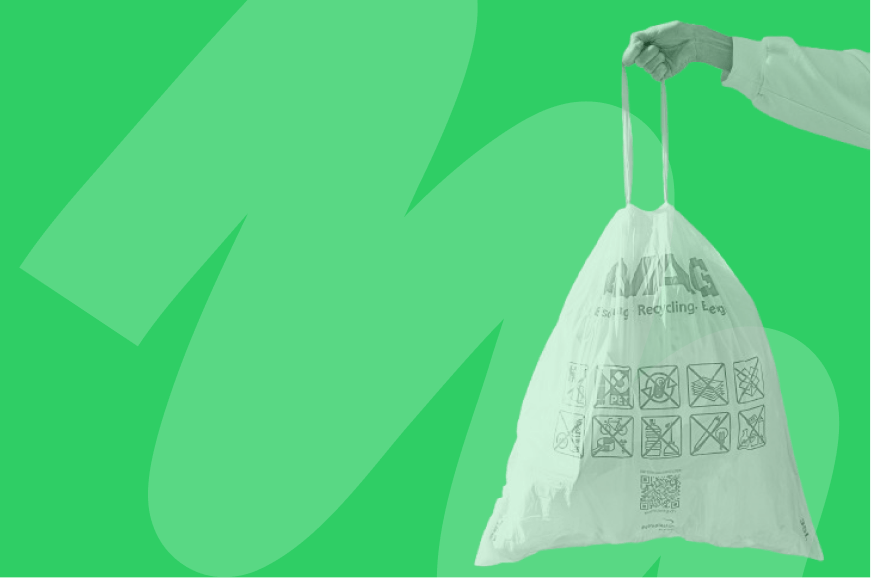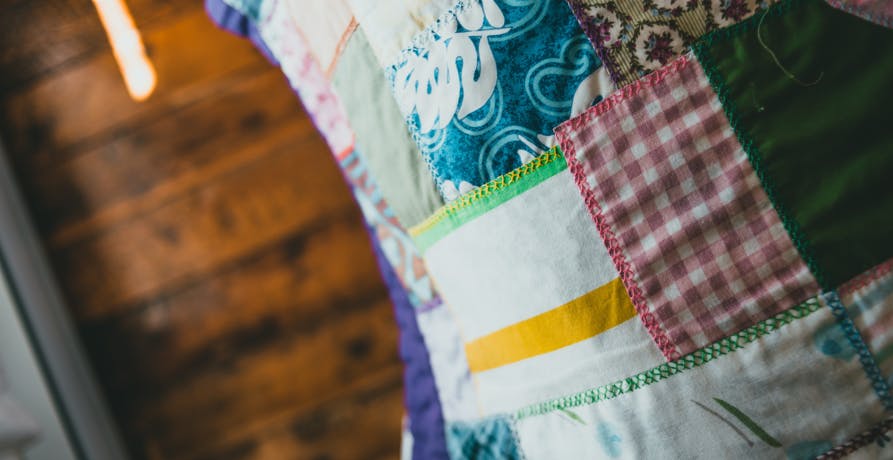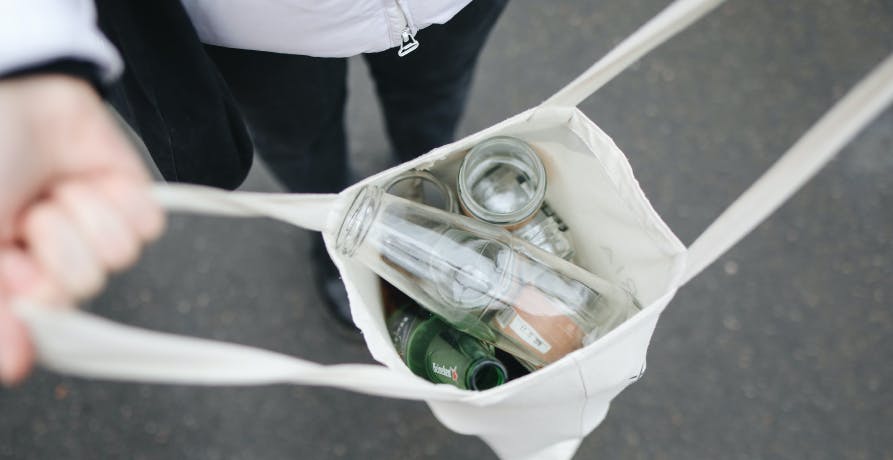
Impacts, Risks, and Opportunities (IRO) for CSRD Reporting
In this article, we’ll break down what IROs are, how to identify and assess them, and what CSRD requires in terms of disclosure.
ESG / CSR
Industries



But with so much information out there, it can be overwhelming to know where to begin. While small changes in our daily habits can certainly help, creating lasting impact requires a shift in how we think about our consumption and waste.
This is where the 6 Rs of sustainability come into play. Reduce, Reuse, Recycle, Refuse, Repair, and Rethink offer a straightforward framework to help us minimise waste, lower our environmental footprint, and make smarter choices.
Whether it’s opting for reusable over single-use items, repairing rather than discarding, or rethinking the way we consume, the 6 Rs empower us to take action that matters.
In this article, we examine the six Rs of sustainability, what they mean, and how can they help us build a more sustainable future.

Sustainability is a term that’s often used, but what does it actually mean in practical terms?
We hear about sustainable fashion, food, and lifestyles everywhere - from the media to businesses and even governments. But when we talk about sustainability, we're addressing a concept that’s both broad and complex.
For many, the most immediate and actionable area to focus on is the environment. With global waste generation reaching new heights, the need to adopt sustainable practices has never been more urgent.
For example, in 2024, studies revealed that over 350 million tons of plastic are produced annually, with only an estimated 9% being recycled. This means that most discarded plastic ends up in landfills or polluting the oceans. This has severe impacts on ecosystems, biodiversity, and human health.
This is where the 6 Rs of sustainability come into play. These principles offer a concrete framework to help us reduce waste, conserve resources, and make more mindful choices in our daily lives - actions that contribute directly to environmental sustainability.
Sustainability is a broad concept, but when it comes to making real, everyday changes, frameworks like the 6 Rs can provide clear guidance.
Many of us are already familiar with the 3 Rs - Reduce, Reuse, and Recycle - which aim to minimise waste by rethinking how we use and dispose of resources.
Consumption is at an all-time high - whether it's meat, fast fashion, or the burning of fossil fuels. For too long we've lived as if the earth's resources are endless, but that's simply not the case.
Natural resources are limited, and we need to preserve them for future generations.
This is why the first R, and the most important R, is Rethink. The concept of rethinking asks us to question our habits of consumption and to consider how this might impact the environment. A useful question to ask yourself is: Do I really need that?
How to apply Rethink in everyday life:
| Scenario | Rethink Action |
|---|---|
|
Transport
|
Instead of driving, consider walking, cycling, or taking public transport. Carpool when possible. |
|
Clothing
|
Ask yourself if you really need that new garment, or if you can repair and reuse the ones you already own. |
|
Grocery Shopping
|
Avoid products wrapped in plastic packaging. Choose alternatives with minimal or no packaging. |
|
Food Consumption
|
Rethink food waste. Can leftovers be turned into another meal or composted? Consider reducing meat consumption. |
|
Technology & Electronics
|
Before upgrading devices, ask if your current ones are still functional. Recycle or donate old electronics instead of discarding them. |
|
Energy Use
|
Turn off lights and electronics when not in use. Consider more energy-efficient alternatives for heating, cooling, and appliances. |
|
Home Decor
|
Opt for second-hand or upcycled furniture instead of buying new. |
|
Takeaway Food
|
Bring your own containers for takeout or opt for businesses that use sustainable packaging. |
|
Water Consumption
|
Reduce water wastage by using water-saving fixtures and being mindful of your usage. |
On a larger scale, Rethink calls for a shift in how we view business, industry, and the economy.
It challenges us to ask whether the way our economies function today aligns with long-term sustainability.
This rethinking extends beyond just individual action. It invites us to advocate for changes within our communities, governments, and industries. It encourages the development of sustainable business practices, policies, and infrastructure that prioritise long-term environmental health over short-term profits.
By demanding systemic change, we can help shift the broader narrative towards one that values sustainability and future-proof solutions.

Refuse is the second R, and the next step after you stop and rethink. Refuse simply asks us to stop accepting the things that are harming our environment.
On an individual level, Refuse encourages us to stop purchasing and consuming things that we do not need. It asks us to consider whether the item is necessary or not, and if it's not, we should avoid purchasing or consuming it.
Refusing can be a powerful way to reduce waste and prevent harm to the planet - ultimately cutting down on the demand for single-use, disposable products that burden our ecosystems.
How to apply Refuse in everyday life:
| Scenario | Refuse Action |
|---|---|
|
Single-Use Plastics
|
Say no to plastic bags, straws, and utensils. Opt for reusable alternatives like cloth bags, bamboo straws, and metal cutlery. |
|
Takeaway Containers
|
Refuse disposable packaging by bringing your own containers for takeout food or choosing businesses that use compostable or reusable packaging. |
|
Fast Fashion
|
Refuse impulse buys from fast fashion retailers. Instead, invest in quality, long-lasting clothing or opt for second-hand items. |
|
Plastic Bottles
|
Refuse single-use plastic bottles. Use a reusable water bottle that you can refill throughout the day. |
|
Excessive Packaging
|
Refuse items with excessive packaging. Choose products with minimal or recyclable packaging or purchase in bulk to avoid excess plastic. |
|
Food Waste
|
Refuse to over-purchase food, leading to waste. Buy only what you will use and focus on utilizing leftovers to reduce unnecessary waste. |
|
Disposable Coffee Cups
|
Refuse disposable coffee cups and lids. Bring your own reusable coffee cup to your favorite café or opt for alternatives like bamboo or stainless steel mugs. |
|
Fast Food Packaging
|
Refuse fast food packaging by avoiding drive-thru meals, where packaging is often unavoidable. Choose sit-down restaurants or take your own containers. |
|
Beauty Products with Harmful Ingredients
|
Refuse beauty products that contain harmful chemicals. Choose eco-friendly and cruelty-free brands with minimal or reusable packaging. |
|
Printed Materials
|
Refuse printed materials like flyers or pamphlets that you don’t need. Opt for digital alternatives to save paper and reduce waste. |
Refusing isn’t just about individual actions; it’s about creating a culture where companies and industries are encouraged to produce products that are more sustainable by default.
The more we collectively refuse unnecessary products and packaging, the more businesses will adapt to the demand for greener alternatives.

Reduce is the first R in the environmental trio (Reduce, Reuse, Recycle). It focuses on minimising the amount of stuff we use, buy, and already own.
The principle behind Reduce is simple: consume less, waste less. By cutting down on what we consume, we can decrease the strain on natural resources and reduce waste, which directly benefits the planet.
It’s not just about cutting back on items but also making more mindful, conscious choices that contribute to overall sustainability.
Reducing food waste, for instance, can have a profound impact on reducing emissions and conserving resources, as well as addressing the global hunger crisis.
By reducing, we’re making choices that align with the planet’s limits while helping us live more sustainably. The goal isn’t to completely eliminate our consumption, but to be more mindful about what we buy, use, and throw away.
How to apply Reduce in everyday life:
| Scenario | Reduce Action |
|---|---|
|
Water Usage
|
Take shorter showers, turn off the tap while brushing your teeth, and use water-efficient appliances. |
|
Electricity Consumption
|
Turn off lights and appliances when not in use, use energy-efficient bulbs, and unplug electronics. |
|
Food Waste
|
Plan meals ahead of time, store food properly, and use leftovers instead of ordering takeout. |
|
Plastic Waste
|
Avoid plastic-wrapped goods, use reusable bags, and reduce reliance on single-use plastic packaging. |
|
Clothing
|
Buy fewer clothes and focus on quality over quantity. Opt for timeless pieces instead of trendy, fast fashion. |
|
Technology
|
Avoid upgrading gadgets unless necessary. Use devices until they no longer function and recycle electronics responsibly. |
|
Car Usage
|
Walk, cycle, or take public transport instead of driving short distances. Carpool when possible. |
|
Packaging
|
Buy in bulk to reduce packaging waste, and choose items with minimal or eco-friendly packaging. |
|
Consumer Goods
|
Only buy items you genuinely need, and avoid impulse purchases or items that won’t last. |
|
Home Energy Use
|
Use a programmable thermostat, weatherproof your home to avoid energy waste, and switch to energy-efficient appliances. |
|
Disposable Items
|
Choose reusable items over disposables—use cloth napkins, reusable straws, and reusable containers. |
|
Diet
|
Reduce meat consumption, especially red meat, and focus on plant-based meals. |

Reuse also belongs to the 3 Rs, and is all about finding ways to extend the life of the items we already own instead of discarding them.
Rather than throwing something away, think about how you can give it a new purpose.
This could mean repairing the item to use it in the same way, or finding an entirely new use for it. Alternatively, you can donate the item to a local charity, sell it on platforms like eBay, or pass it on to a friend who will make good use of it.
Repurposing is a great way to get creative. Ask yourself: What else could I turn this item into
For example, old jeans could be turned into a pair of shorts for summer, or worn-out jumpers could be transformed into a cozy quilt. There are endless ideas and how-to guides online to inspire you, so why not explore and get started on your own creative project?
By reusing items, we not only keep them out of landfills but also contribute to a culture of sustainability where waste is minimised, and resources are maximised.
How to apply Reuse in everyday life:
| Scenario | Reuse Action |
|---|---|
|
Clothing
|
Repair old clothes instead of throwing them away. Turn worn-out jeans into shorts or use fabric to make new items like bags or cushions. |
|
Furniture
|
Refurbish old furniture with a fresh coat of paint or reupholster chairs instead of buying new pieces. |
|
Packaging
|
Reuse boxes, jars, and containers for storage or organization. Use old newspapers for wrapping gifts. |
|
Electronics & Appliances
|
Repair malfunctioning electronics and appliances instead of replacing them, and donate or repurpose items that still work. |

In line with Reuse, Repair encourages us to fix broken things instead of discarding them, helping us reduce the demand for new products and conserve natural resources.
Repairing what we already own is one of the most effective ways to extend the life of our belongings and reduce waste.
Even furniture and electronics don’t have to be considered disposable. For example, if your phone’s battery starts to fail, rather than purchasing a brand-new device, you can simply replace the battery, giving your phone a second life.
The scale of this issue is evident when we look at the numbers: nearly 22 million small pieces of furniture, over 11,000 bicycles, and more than 28 million toys are discarded in the UK every year after becoming damaged. These items could easily be repaired, reused, or repurposed, saving valuable resources and reducing landfill waste.
Repairing not only helps keep items out of landfills but also reduces the need for new resources to create replacement products. With so many repair services available, it’s easier than ever to breathe new life into old items, saving both money and the environment.
How to apply Repair in everyday life:
| Scenario | Repair Action |
|---|---|
|
Clothing
|
Mend holes or tears in clothes instead of discarding them. Take items to a tailor for alterations or repairs. |
|
Footwear
|
Repair worn-out shoes by replacing soles or re-gluing the soles instead of buying new ones. |
|
Electronics (Phones, Laptops, etc.)
|
Replace batteries, fix screens, or update software rather than replacing the entire device. |
|
Furniture
|
Repair broken furniture by fixing loose joints, re-gluing, or reupholstering instead of replacing it. |
|
Appliances
|
Repair malfunctioning appliances like washing machines, toasters, or microwaves rather than replacing them. |
|
Bags and Accessories
|
Repair damaged bags by fixing zippers, straps, or sewing up tears instead of discarding them. |
|
Toys
|
Fix broken toys or replace small parts to extend their lifespan instead of purchasing new ones. |
|
Household Items
|
Repair household items like lamps, clocks, or vases by replacing parts or fixing broken components. |

Recycling is the third and final "R" of the 3 Rs, and it's probably the one you're most familiar with.
While the concept of recycling isn’t new, how we recycle can vary depending on the access we have to recycling facilities.
In some areas, it’s as simple as putting recyclables at the curb, while in others, it might require a bit more effort. Even if your local council doesn’t collect recyclables, there are still plenty of ways you can do your part.
However, despite these growing challenges, many of us still aren't recycling enough. In the UK, just 44% of household waste is recycled, according to government statistics. In the US, the recycling rate has improved over the years, this is even lower at 32%. Clearly, there is significant room for improvement in recycling rates globally.
By recycling, we reduce the demand for raw materials (recycled materials can be repurposed), minimise waste in landfills, and help keep our air and water cleaner. Every item we recycle is one less item sitting in a landfill, and one less resource extracted from the planet.
So, how do you recycle? Many communities offer roadside recycling collections, making it easy for you to recycle paper, glass, and plastic. If this isn't an option, check for local recycling drop-off centers - many towns have dedicated facilities for recyclables. Some supermarkets also offer recycling services, particularly for items like electronic devices, batteries, and other hard-to-recycle items.
However, it’s essential to remember that recycling alone is not enough to achieve sustainability. While recycling helps reduce waste, it’s just one piece of the puzzle.
We must also prioritise the other Rs - reduce, reuse, refuse, rethink, and repair - to make a meaningful impact. Achieving sustainability requires a holistic approach, and recycling is just one step along the way.
How to apply Recycle in everyday life:
| Scenario | Recycle Action |
|---|---|
|
Paper
|
Recycle office paper, newspapers, and magazines. Keep them dry and remove any plastic coatings or inserts. Don’t recycle soiled paper, such as pizza boxes with grease. |
|
Plastic
|
Recycle plastic bottles, containers, and packaging. Clean and dry items to prevent contamination. Check your local guidelines for which types of plastic are accepted. |
|
Glass
|
Recycle glass bottles, jars, and containers. Clean thoroughly and remove labels to avoid contamination. Don’t recycle broken glass or glass cookware. |
|
Aluminum
|
Recycle aluminum cans, foil, and trays. Rinse them to remove food waste, and don’t recycle foil that’s heavily contaminated. |
|
Electronics
|
Recycle old electronics at e-waste centers. Remove batteries and keep devices intact for proper processing. |
|
Batteries
|
Recycle batteries at designated collection points. Don’t throw them in general recycling bins; instead, use local battery recycling stations. |
|
Clothing and Textiles
|
Recycle clothes by donating them or taking them to textile recycling centers. Avoid recycling items that are too damaged to be repurposed. |
|
Furniture
|
Recycle broken furniture by donating reusable parts or taking them to recycling centers that accept them. Clean furniture before recycling to prevent contamination. |
|
Food Packaging
|
Recycle cardboard, plastic, or metal food packaging. Make sure packaging is clean and free from food waste. |
|
Light Bulbs
|
Recycle light bulbs at specialized centers. Compact fluorescent bulbs (CFLs) should not go in curbside bins and need special handling due to mercury content. |
|
Plastic Bags
|
Recycle plastic bags at designated collection points, such as supermarkets. Don’t place them in curbside bins as they can jam machinery. |
|
Beverage Containers
|
Recycle glass, plastic, or aluminum beverage containers. Rinse out the containers and check if there are deposit return schemes in your area. |

By incorporating these principles into business practices, companies can minimise waste, optimise resource usage, and contribute to a more sustainable future.
Here’s how businesses can implement the 6 Rs:
| R | Business Application |
|---|---|
|
Rethink
|
Evaluate business models and processes to ensure they align with sustainability goals. This might involve shifting to a circular economy, rethinking product designs, or embracing service-based models (e.g., product-as-a-service). |
|
Refuse
|
Refuse to work with suppliers that don’t adhere to sustainable practices. Avoid using unnecessary materials or resources, and refuse to use single-use plastics and non-recyclable packaging. |
|
Reduce
|
Reduce energy consumption, water usage, and waste production. Implement energy-efficient technologies and reduce carbon emissions in supply chains and production processes. |
|
Reuse
|
Reuse materials and products where possible, such as reusing packaging or repurposing office furniture. Establish take-back programs to give products a second life. |
|
Repair
|
Encourage product repairs rather than replacements. Offer repair services or collaborate with third-party repair providers. For example, instead of replacing office equipment, repair and upgrade existing devices. |
|
Recycle
|
Implement effective recycling programs for paper, plastic, electronics, and other materials. Ensure that waste is separated correctly and educate employees about proper recycling practices. |
While this system has driven economic growth, it has also led to a staggering amount of waste and environmental damage - air pollution, deforestation, and the depletion of our natural resources are just a few of the consequences we see daily.
For individuals and businesses alike, the desire to make a difference is growing. People want to do better, to reduce their environmental footprint, and to live more sustainably. However, many feel overwhelmed by the scale of the issue and don’t know where to start.
The good news is that the 6 Rs provide a simple yet powerful framework that can guide us in transforming our consumption habits and making more mindful decisions.
The 6 Rs offer a practical, step-by-step approach for anyone looking to reduce their impact - whether it’s rethinking our relationship with resources, refusing unnecessary products, or recycling more effectively.
It’s about taking small, manageable steps that add up over time. By adopting even a few of these principles in our daily lives, we can begin to shift the way we consume and the way we think about waste.
The 6 Rs offer a solid framework for individuals and businesses looking to reduce their environmental footprint. However, for businesses, translating these principles into tangible actions often requires support, especially when it comes to understanding and reducing carbon emissions across your operations.
This is where Greenly comes in. Our suite of carbon management services is designed to help businesses take the next step in their sustainability journey by tracking, managing, and reducing their carbon emissions. Here’s how Greenly can help:
By integrating Greenly into your sustainability strategy, businesses can ensure they’re equipped with the tools to make real, lasting change. Together, we can take practical steps towards a greener future.
Get in touch with Greenly today to find out more.